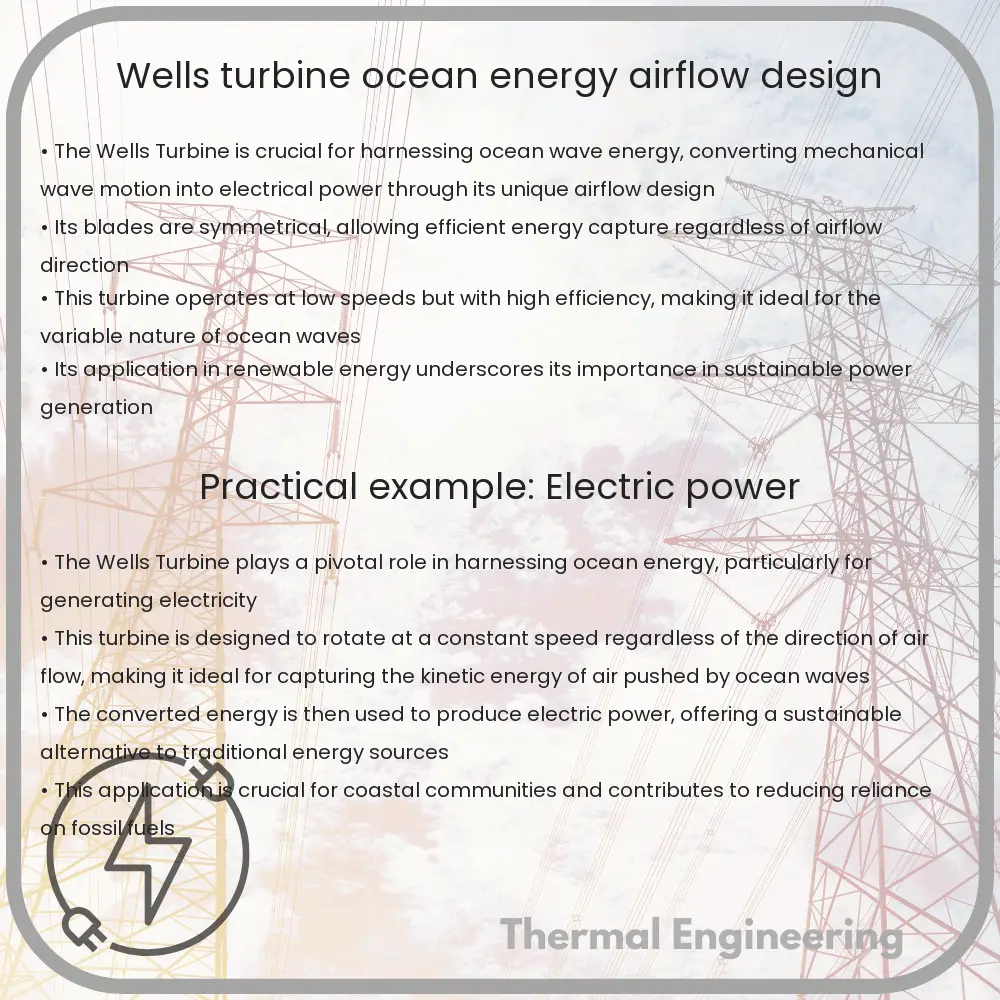Learn about the Wells Turbine, its design, operation, and role in converting ocean wave energy into electrical power efficiently.

Understanding the Wells Turbine: Harnessing Ocean Energy through Airflow Design
The Wells Turbine is an innovative mechanical device designed to convert ocean wave energy into electrical power. Named after its inventor, Professor Alan Wells from Queen’s University Belfast in the 1970s, this turbine is a key component in wave energy conversion systems. Its unique design allows for continuous electricity generation from the oscillating airflow caused by ocean waves.
Principles of Operation
The Wells Turbine operates on a simple yet effective principle: it utilizes the bi-directional airflow generated by the motion of ocean waves in an Oscillating Water Column (OWC). As waves rise and fall, air is pushed in and out of a chamber. This oscillating airflow drives the turbine’s blades, which are symmetrically designed to rotate in a single direction regardless of the airflow direction. This consistency in rotation removes the need for complex control systems to handle direction changes, enhancing the reliability and efficiency of the turbine.
Key Design Components
- Axial Flow Design: The turbine blades are aligned parallel to the direction of the airflow, typical of axial flow turbines. This arrangement maximizes the conversion of air kinetic energy into rotational mechanical energy.
- Symmetrical Blades: Each blade’s aerodynamic profile is symmetrical, meaning it can effectively capture energy from air moving in either direction through the turbine.
- Low Cut-in Speed: The Wells Turbine operates effectively at low wind speeds, which is ideal for environments where wave-induced air velocities are relatively low.
Challenges in Efficiency and Improvements
While the Wells Turbine presents a remarkable solution for wave energy conversion, several challenges affect its overall efficiency:
- Blade Stall: At higher air velocities, the turbine may experience blade stall, which can lead to a significant drop in performance. This occurs when the angle of attack on the blades becomes too great, causing airflow disruption and loss of lift.
- Noise and Vibration: The turbine’s operation can generate considerable noise and vibrations, potentially impacting the structural integrity of the installation and reducing the comfort of nearby habitats.
To address these issues, ongoing research focuses on blade design optimization and the integration of variable pitch blades, which adjust their angle relative to the airflow to maintain optimal performance across varying operational conditions.
Applications and Future Prospects
The Wells Turbine is primarily used in OWC wave energy converters, which are suited for coastal regions with strong wave activity. The technology has been deployed in several pilot projects around the world, contributing to the renewable energy mix and supporting coastal community power needs.
Looking toward the future, improvements in materials science, blade design, and computational fluid dynamics (CFD) modeling promise to enhance the performance and reliability of the Wells Turbine. Increased efficiency and reduced costs are critical for scaling up this technology and achieving wider adoption in the global push towards sustainable energy solutions.
In conclusion, the Wells Turbine stands out in the field of renewable energy for its unique solution to converting ocean wave energy into usable power. With continuous advancements, it holds the potential to play a significant role in the sustainable management of our planet’s vast ocean energy resources.